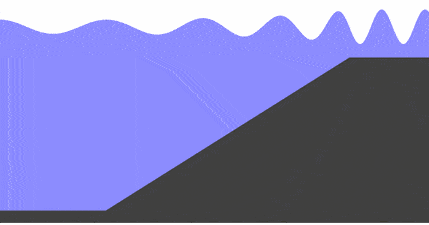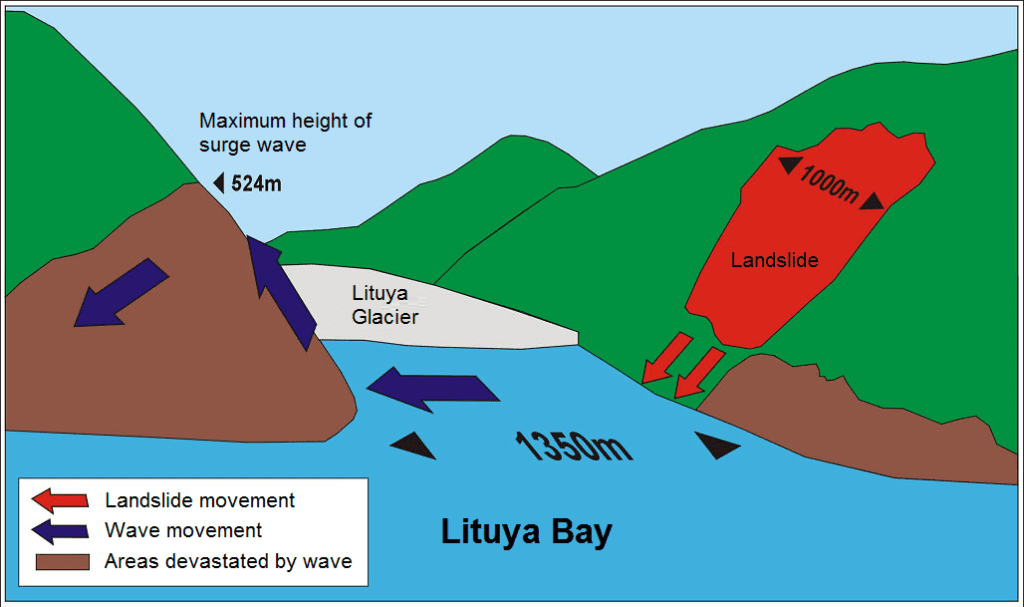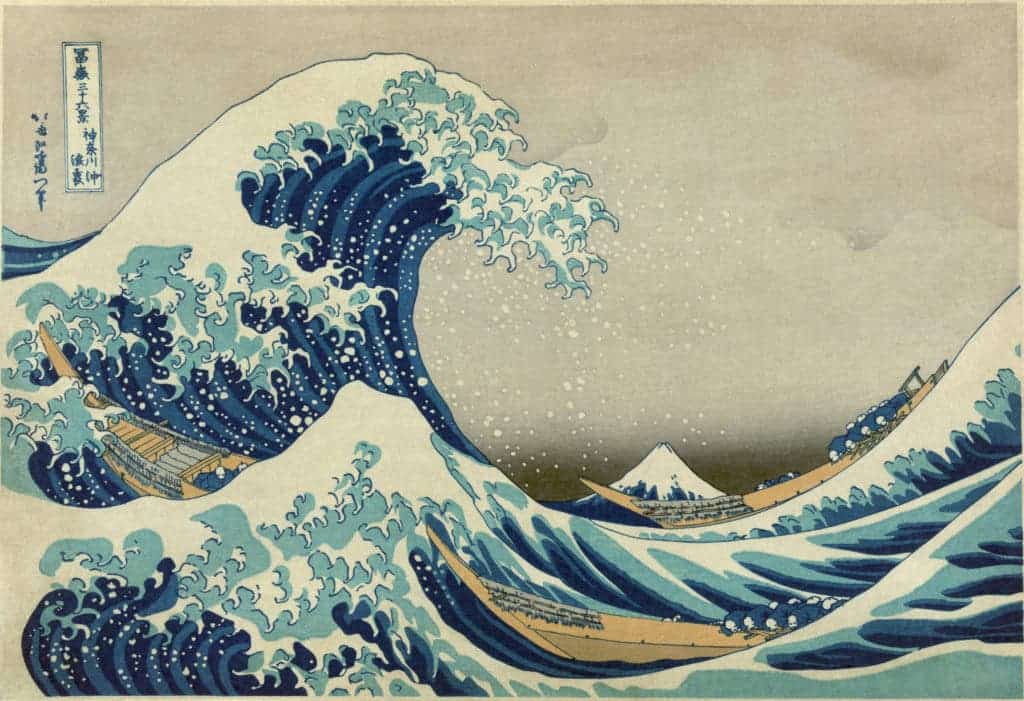Most waves form due to winds or tides, but tsunamis have a different origin altogether. A tsunami is most often formed by an earthquake, but it can also be formed by an underwater landslide, volcano eruption, or even meteorite.
The process is fairly complex, so let’s start digging into it.
What is a tsunami?
“Tsunami” is a Japanese word meaning “harbor wave,” but that doesn’t say much about their nature, and tsunamis are not nearly restricted to harbors. A more accurate term would be “seismic sea waves,” and it would describe them more accurately. However, the name tsunami has stuck and it’s what everyone uses today. People sometimes refer to them as “tidal waves,” but that term is technically incorrect and should be avoided in this context.
Tsunamis are indeed waves, but unlike wind waves, they have a much larger wavelength. Think a bit about waves — in the context of physics, not in the context of sea waves. A defining characteristic of every wave is its wavelength. Wind waves have short wavelengths which can be clearly seen on any shoreline. They come in every few seconds, with a few meters in between the peaks — sometimes, even less.
But a tsunami has a huge wavelength, oftentimes longer than a hundred kilometers and this is why they are so dangerous. Tsunamis are almost always not singular waves, but come in as train waves.
How tsunamis form – earthquakes
The vast majority of tsunamis form due to earthquakes — specifically tectonic tsunamis. As an earthquake happens, the ground beneath the water is moved up and/or down abruptly and as this movement happens, a mass of water is displaced and starts moving in all directions. This marks the start of a tsunami.
The displaced water starts to move as a wave. At this point, it has a very low amplitude as it is located in deep water (earthquakes on the coastline rarely cause tsunamis). Tsunamis in open water are usually shorter than 0.3 meters (12 inches).

As the wave starts moving towards the shore, a series of events begin to occur. First of all, water gets shallower and shallower. As a result, the height of the tsunami starts to increase, and can continue to do so quite dramatically. This is the main reason why these waves are so dangerous: They carry on huge masses of water. When they get closer to the shoreline, the volume of the tsunami remains constant, but because the water gets shallower, their height starts to increase.
The 3D simulation below shows how the process is taking place — note the waterline retreating before the tsunami hits. This is called a drawback.
Also, the shallow water somewhat slows down the waves and the waves start getting closer together. In the deepest parts of the ocean, tsunamis can travel faster than a jet, at 970 kph (600 mph). This means that in only a few hours, it can cross entire oceans.
Tsunamis don’t stop once they hit land. Much of their energy is dissipated and reflected back, but some of it is still maintained and tsunamis will continue to travel inland until all their energy is gone. So don’t think that if you’re a bit farther from the beach, you’re safe. In some rare instances, tsunamis can also travel up river valleys.
How tsunamis form — other sources
In rare cases, tsunamis can also be caused by landslides, volcano eruptions, and meteorites. In all cases the main principle is the same — a water mass is displaced and as it nears the shoreline it starts growing in height. However, the displacement mechanism differs.
Landslide
Underwater, landslides are often similar to volcanoes that avalanche into the sea. This process happens as a result of an earthquake, so in a way, the main source is still an earthquake. However, earthquakes can also merely loosen landmass which starts falling at some later point.

Volcanoes
Volcanoes can form tsunamis through two mechanisms. Either they collapse or they eject matter with such strength that they uplift the water. In the first case, land-based volcanoes can also cause tsunamis, if they are very close to the sea.
Meteorites
If you’ve ever thrown a pebble into the water, you’ve seen that it creates ripples. The meteorite works in pretty much the same way, except it creates huge ripples. This kind of tsunamis are really rare, but there is an instance in 1958 where such a wave was created by rockfall in Lituya Bay, Alaska.
Why tsunamis are so dangerous?
Tsunamis are not always colossal waves when they come into the shore. According to the USGS, “… most tsunamis do not result in giant breaking waves (like normal surf waves at the beach that curl over as they approach shore). Rather, they come in much like very strong and very fast tides (i.e., a rapid, local rise in sea level).”
By now, you should have a pretty clear idea of why tsunamis are so dangerous. They can be very long (100 kilometers is a reasonable length), very high (the 2011 Japan tsunami measured over 10 meters), and can travel extremely fast without losing much of their energy. An earthquake far into the ocean can send several devastating tsunamis hundreds or even thousands of kilometers away.
2004 tsunami
In 2004, an earthquake with the epicenter off the west coast of Sumatra, Indonesia struck with a magnitude of 9.1–9.3. The Indian Plate was subducted by the Burma Plate and triggered a series of devastating tsunamis, some over 30 meters high. The tsunamis killed over 230,000 people in 14 countries, being one of the biggest natural disasters in human history. It is just one of many tragic examples highlighting the sheer force of tsunamis.
Safety from tsunamis
- The first thing to do is to stay informed.
Since science cannot predict when earthquakes will occur, we cannot determine exactly when a tsunami will be generated. However, that doesn’t mean we’re clueless. With the aid of historical records of tsunamis and numerical models of their size and speed, we can get a pretty good idea as to where they’re likely to be generated. You should always know if you’re in a tsunami risk zone. An estimated 85% of all tsunamis have been observed in the Pacific Ocean in the “Ring of Fire,” but other areas can be dangerous as well and as we mentioned above, tsunamis can also travel great distances.
- If you feel an earthquake in a low-lying, coastal area, keep calm and move away from the coast. Not all earthquakes cause tsunamis, but some do.
- If you see a large water mass retreating, this is the drawback. It’s a telltale sign that a tsunami is coming. A 10-year-old girl saved many lives in 2004 because she knew this from her geography lessons.
- Tsunamis are rarely singular waves — they come in packs, so if one hits, don’t think it’s ‘all clear’ – more may be on their way. Earthquakes also often have replicas, which in turn can cause tsunamis.
- Be on the lookout for tsunami warnings. Tsunamis are fast, but they still take some time to travel. So if you know of an earthquake nearby, check a tsunami forecast and see what it says. Also, keep in mind that a small tsunami on one beach can be a big one on a nearby beach. Underwater topography can play a massive role.
- Buildings are no protection against a tsunami. Going farther away from the beach is the best thing you can do.
- If you’re somehow on a boat or ship and there’s a tsunami coming your way, it may be smarter to move your ship farther into the ocean where the tsunami is smaller. However, this can be very risky. Stay tuned to your local radio, marine radio, NOAA Weather Radio, or television stations during a tsunami emergency.
- Whatever you do, don’t purposely go to the beach to see a tsunami. Seriously. It will outrun or outdrive you and it’s not safe at all.




